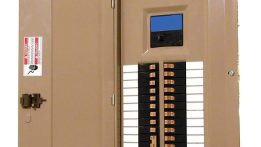 Have you experienced that moment when you’ve spent hours making that gourmet recipe only to have it ruined by that discounted pan? Your masterpiece sticking to the bottom or that savory sauce getting scorched? When trying to salvage what you can, you quickly grab the pot from the burner only to have your hand burned by a scalding handle? That’s when you know it’s time to talk cookware!
Have you experienced that moment when you’ve spent hours making that gourmet recipe only to have it ruined by that discounted pan? Your masterpiece sticking to the bottom or that savory sauce getting scorched? When trying to salvage what you can, you quickly grab the pot from the burner only to have your hand burned by a scalding handle? That’s when you know it’s time to talk cookware!
Pans are only as good as the materials they are made of which is why good heat conductors and heavy gauge materials make the best pans. Some pans have special talents. Depending on what you’ll be cooking there are other attributes you may want to consider.
Good heat conductors, such as copper and aluminum, are highly responsive to temperature changes. They respond almost instantly to the heat source and heat flows more easily through them, assuring quick uniformity of temperature on the cooking surface. If you’re looking for that perfect pan for sautéing, you need one that responds quickly to temperature changes. When sautéing garlic, the pan should cool down quickly so the garlic doesn’t burn after you turn down the flame. Anodized aluminum sauté pans are usually a good all-around choice for responsiveness and easy cleaning. Alternatively, when boiling or steaming stocks or stews, responsiveness isn’t as critical.
Heavy gauge materials aid even heat diffusion. To decide if a pan is heavy enough, lift it, look at the thickness of the walls and base and tap it with your knuckles. You want to hear a dull thud sound. A thicker, heavier pan has more distance between the cooking surface and the heat source so that by the time the heat is transferred to the cooking surface it will have diffused and spread out evenly. The more pan there is to heat, the more heat the pan can hold, so there’s more consistent heat for better browning, faster reducing and hotter frying. When working with a pan full of chicken breasts nestling against the sides, heat coming from the sides of the pan is important to ensure that they cook quickly and evenly. Even heating up the sides of a pot is important for pot roasting and braising as well. If you are looking to be able to start a dish on the stove and finish it off in the oven, it is important to consider the metals used for the handles of these pots to make sure they are oven proof. Enameled cast iron pots with lids are a great choice for those all in one pot dishes that finish in the oven.
When cooking acidic foods, such as tomato sauces, a pan’s lining should be non-reactive. Stainless steel, enamel and anodized aluminum won’t react no matter what they touch. Plain aluminum can discolor white sauces and foods that are acidic, sulfurous or alkaline in nature, and even make those foods taste metallic. Eggs and cabbage are two examples of foods also affected by the graying caused by aluminum. For browning and deglazing, a shiny stainless steel lining is a great choice. If you are trying to cook with less fat, nonstick may be a consideration. Nonstick pans are now being made of harder, high-heat-tolerant materials that can withstand more heat and abrasion. Nonstick pans may not be conducive to deglazing since the surface can be so effective that you never get any brown bits in the bottom of the pan. There are some commercial lines of cookware that have finely ridged nonstick linings that will brown more like a conventional pan.
The bottom line is those packaged starter sets are attractively priced, but as starter sets they may not be suited for every kitchen task. You will get more use and culinary enjoyment out of pieces that you hand-pick yourself to suit your cooking style. ![]()
Article submitted by: Big Bend Restaurant Supply




